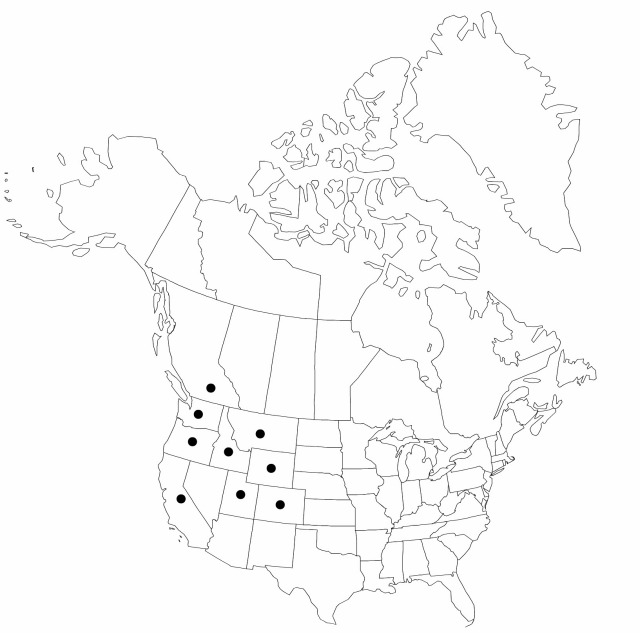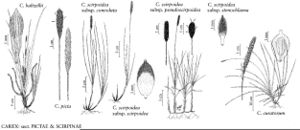familyCyperaceae
genusCarex
sectionCarex sect. Scirpinae
speciesCarex scirpoidea
subspeciesCarex scirpoidea subsp. pseudoscirpoidea
Carex scirpoidea subsp. pseudoscirpoidea
Novon 7: 355. 1998.
IllustratedEndemic
Basionym: Carex pseudoscirpoidea Rydberg Mem. New York Bot. Gard. 1: 78. 1900
Synonyms: Carex scirpoidea var. pseudoscirpoidea (Rydberg) Cronquist
Treatment appears in FNA Volume 23.
Revision as of 21:30, 27 May 2020 by imported>Volume Importer
Plants not cespitose; rhizomes long. Culms erect, 5–31 cm. Leaves: sheaths and bases from previous year’s leaves persistent; blades widely V-shaped in cross section, to 21 cm × 3 mm. Scales ovate, 2.8 × 1.5 mm. Perigynia ovate, (1.5–)2–2.8(–3) × 1.5 mm, body tightly enveloping achene for entire length. Achenes 1.5–1.8 × 0.9–1.2 mm.
Phenology: Fruiting Jun–Sep (depending on elevation).
Habitat: Dry ridge sites, fellfields with gravelly and noncalcareous soils
Elevation: 3300–3900 m
Distribution

B.C., Calif., Colo., Idaho, Mont., Oreg., Utah, Wash., Wyo.
Discussion
Compared to Carex scirpoidea subsp. pseudo-scirpoidea, C. scirpoidea subsp. scirpoidea occurs at relatively lower elevations and in wetter sites with calcareous soils.
Selected References
None.
Lower Taxa
None.
